
Down in Mexico (Part 1)
Convenience retail has its own unique flavor in Ciudad Mexico, and that’s putting it mildly.
SSCS was in Mexico last week. It wasn’t entirely what we expected.
Partly that was because we didn’t go to Cancun or the hundreds of other Mexican resorts alongside the water. The positives of beach side resorts are pretty clear and well-established.
Instead, we went to Mexico City—Ciudad (CD) Mexico—which is a little different, being a real working metropolis. More than that, it’s a mega city, 20 million citizens compared to New York City’s eight million plus. That’s a lot of North Americans! And not a beach in sight!
Truthfully, we didn’t know what to expect. And suddenly there we were, looking out our window at El Ángel del la Independencia, Mexico’s monument to its independence. It’s an icon; the whole city literally revolves around it. We liked how it looked at night:
![]()
Being right in the middle of CD Mexico, you have no awareness of its size, you just know what’s immediately around you: a modern city, with energetic, fit-looking young professionals and students whirling by, many on scooters, adding to the chaos that is downtown traffic, which is why many opt for one of the inexpensive mass transportation options, including busses, trains and white-and-pink taxis. And though we didn’t notice any Mexican-made automobiles on the road, Suzuki was a prominent vehicle nameplate and we saw a heck of a lot of Renault Arcanas!
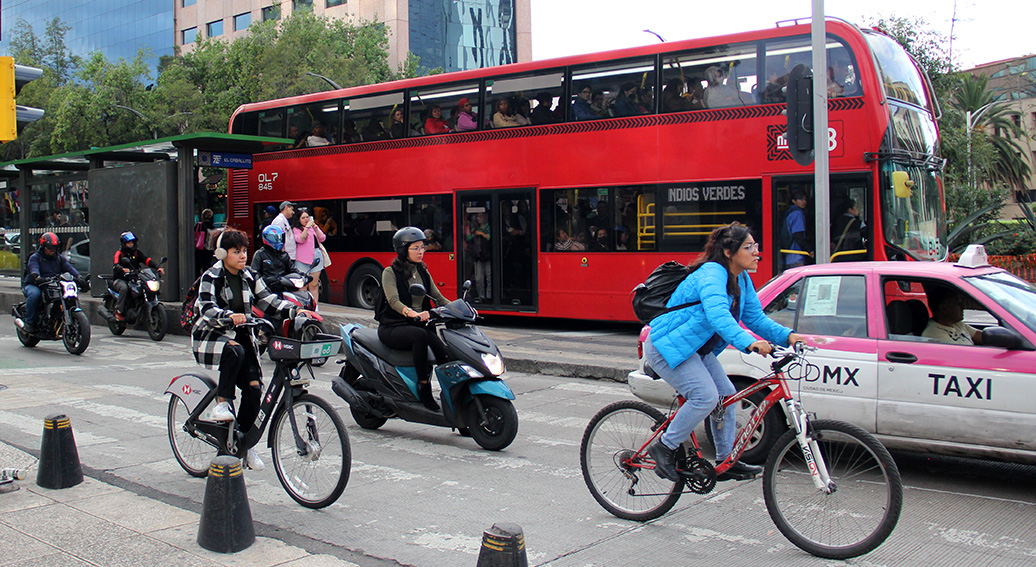
Our base of travel was on Paseo de la Reforma, a massive street crammed with many and varied retail food options. There’s a c-store on each block (along with other retailers bordering on convenience—more on those later). Here’s an overhead shot of La Reforma to give you a partial sense of its scope.
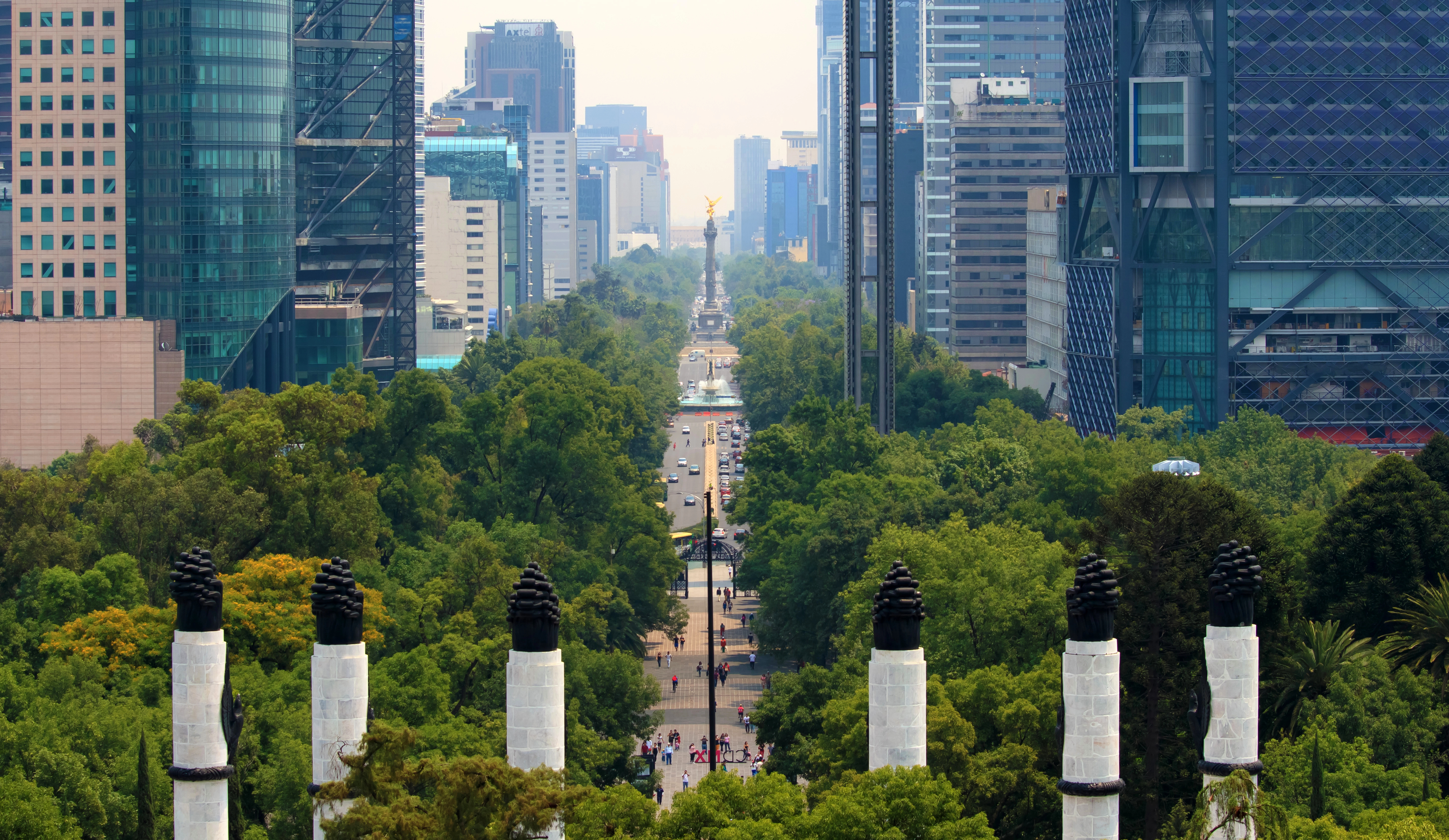
Needless to say, there’s a lot of interesting commercial activity going on at street level down there, under the trees, out of our view. In addition, thriving neighborhood pockets with their own distinct identities can be found right off La Reforma, such as Roma (for hipsters!), Condesa (upscale residential and boutique hotels), Zona Rosa (where there’s always a party), and Pequeno Seul (Little Seoul).
We’ll be exploring CD Mexico at ground level to a much greater extent next week, but let’s complete our top-down overview first. That means looking at the traditional side of the city, which is as big a part of its identity as the modern boulevard pictured above. Conveniently, it’s only a few minutes away on foot:
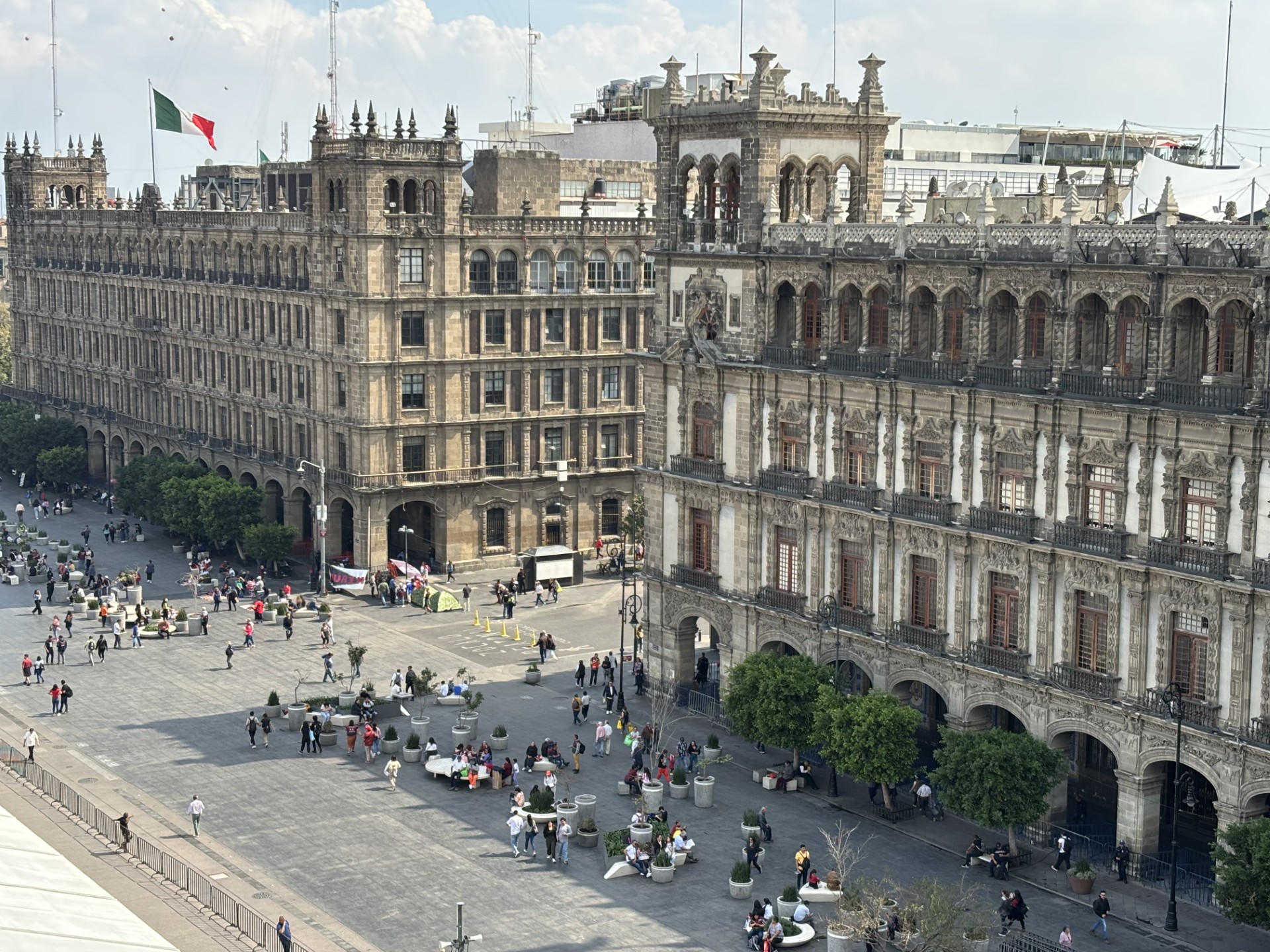
This is the Plaza de la Constitución, commonly referred to as the Zócalo, a city square second in size only to Tiananmen. It’s not a historical artifact ether; this is where the Mexican government does business every day. The President’s residence is located here.
The square was originally the main ceremonial center of the Aztec city of Tenochtitlán. After the Spanish conquest in the early 16th century, the area was transformed with the colonial structures visible above. As you can see, the grounds are impeccably kept. Indeed, the same can be said for most of CD Mexico’s modern downtown.
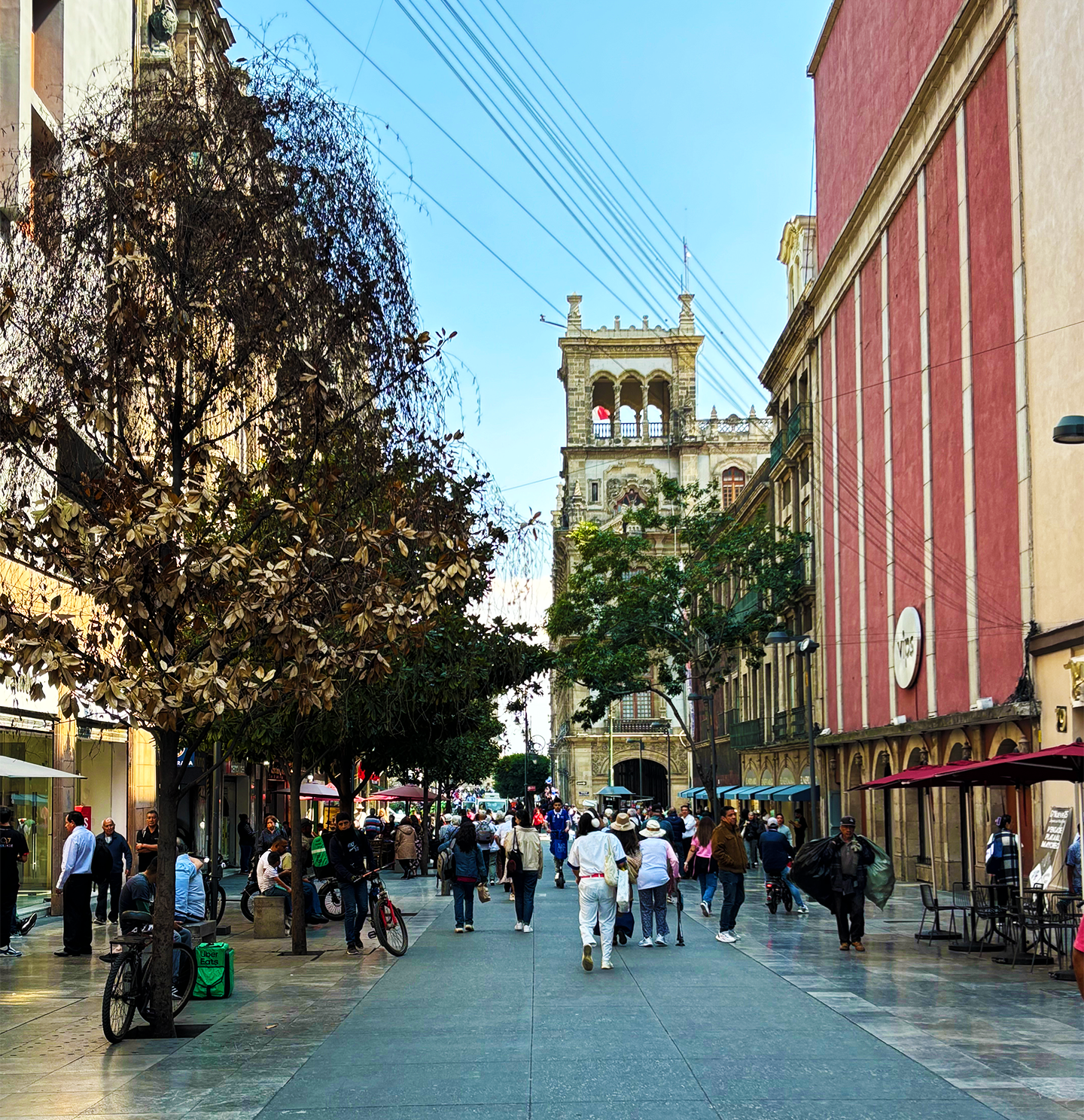
The question remains, then: what kind of convenience retailing operations take hold in a city that looks to the future, while being a living part of the past? The answer is an interesting one, as you’ll find out next week.
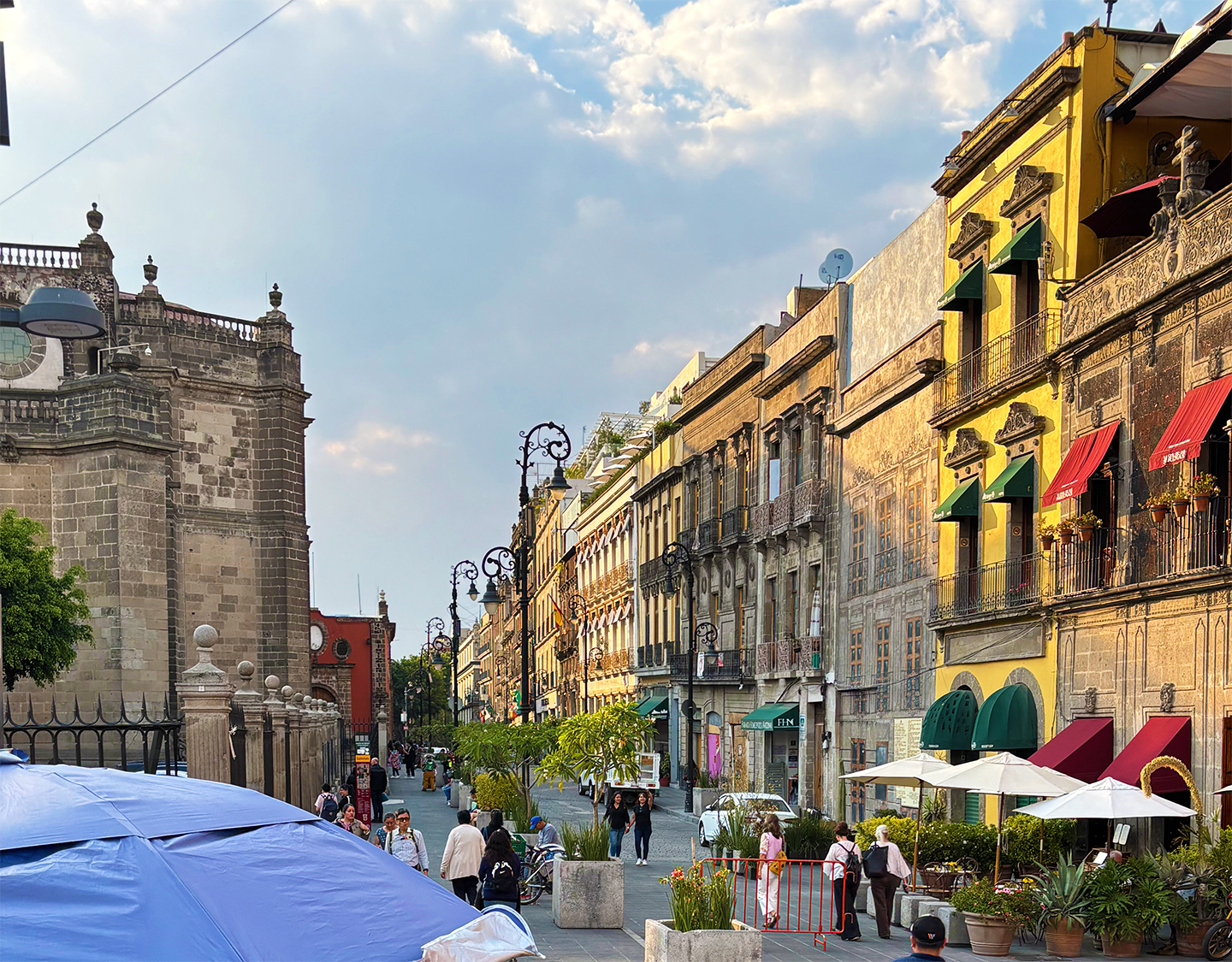






Leave A Comment